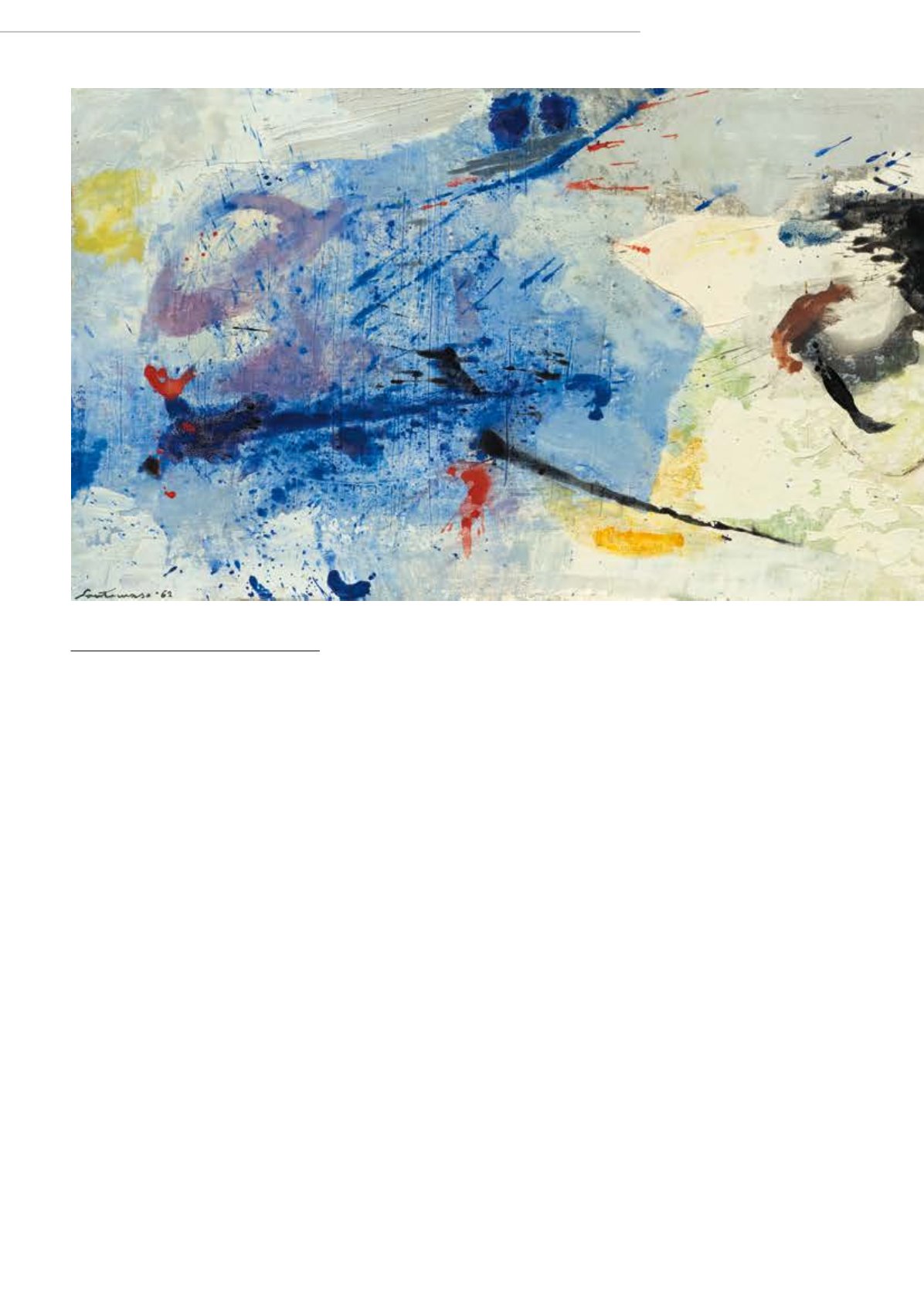

| 60
PostWar & Contemporary
3408 GIUSEPPE SANTOMASO(1907 Venice 1990)
Untitled. 1962.
Oil and dry pigments on canvas.
Signed and dated lower left: Santomaso
62, as well as on the reverse:
Santomaso 62.
30 x 105 cm.
This work is registered in the Archivio
Giuseppe Santomaso, Galleria Blu, Milan,
under number: sot /1605. We thank Galle-
ria Blu for their support.
Provenance: By descent to the present
owner, privately owned Switzerland.
While at the beginning of the 20th century
the avant-garde artistic movements were
still associated with specific countries
(Expressionism - Germany; Cubism -
France; Futurism – Italy; etc), the Abstract
Art movement after 1945 was noted
for its international character. Although
emanating from Paris, with Hans Hartung,
Georges Mathieu and others, Abstract Art
spread at an incredible pace, independent
of national boundaries. As well as the
fact that from the 1950s the world had
become smaller, thanks to the media and
the growth in tourism, it was especially the
case that, “the vocabulary of abstraction
[…] was taken up by many artists of almost
every country as a message of salvation.”
(cit.: Walther, Ingo (Ed.): Kunst des 20.
Jahrhundert. Teil 1. Malerei, Cologne 2000,
p. 239). Italy too was caught up in this
wave and influenced the development of
abstraction through artists such as Piero
Dorazio, Afro, Renato Birolli, Emilio Vedova
and Giuseppe Santomaso, with two of his
works being offered here at auction.
Born in Venice in 1907, Santomaso spent
his entire life, with a few breaks, in his
home city. In 1932 he began his studies
at the Art Academy in Venice, and just 2
years later he exhibited at the Biennale,
where he would participate 13 times in to-
tal. He began to be interested in the avant-
garde. Initially inspired by the art journal
VERVE, from 1937 he travelled first to The
Netherlands and then to Paris, in order to
see the work of the Impressionists and
Expressionists in the original. In 1939 he
exhibited for the first time in Paris at the
Galerie Rive Gauche. After World War II
Santomaso was one of the founder mem-
bers of the artist group “Nuova Secessione
Artistica Italian”, in which he endeavoured
to find a synthesis between abstraction
and realism, which was unsuccessful in the
end, however. In the mid 1950s he turned
to Informel Art, which we can see most ef-
fectively in the two works presented here.
In the 1970s he incorporated increasingly
architectural or constructive elements in
his works. He taught at the Art Academy
in Venice until his death. Alongside his
numerous appearances at the Biennale, he
was invited three times to the documenta
in Kassel and had numerous exhibitions in
international museums.
Giuseppe Santomaso’s works of the 1960s
and 70s are abstract landscapes in which
the colour palette is influenced by the
light of Venice and the composition by the
architecture of his home city. He sought
a way into abstraction via an examination
of nature, without losing that relationship
to nature. Consequently, his work often
strikes us as less radical and rather reti-
cent, and yet it is always clear to the viewer
that Santomaso’s point of departure is
that of nature and lived experience, which
makes our access to his work both more
intense and at the same time simpler.
CHF 30 000 / 50 000
(€ 27 780 / 46 300)


















